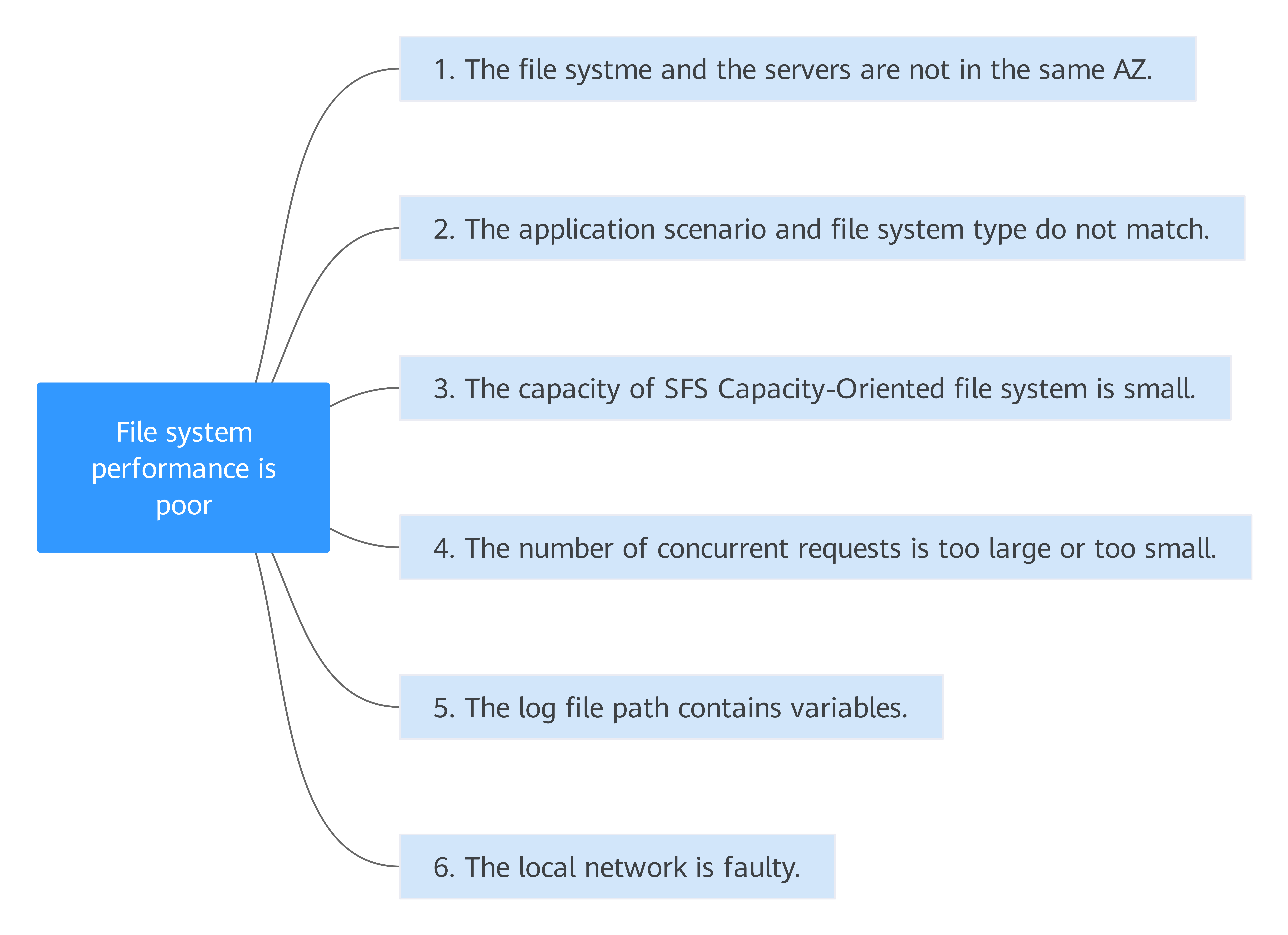File System Performance Is Poor
Symptom
Data is written slowly to the file system, the file system performance cannot meet service requirements, or file transfer is slow.
Troubleshooting
Possible causes are sequenced based on their occurrence probability.
If the fault persists after you have ruled out one cause, move on to the next one in the list.
Figure 1 Troubleshooting

Possible Causes | Solution |
|---|---|
The file system and the servers where the file system is mounted are not in the same AZ. | Create a file system in the same AZ as the servers, migrate the data from the original file system to the new file system, and mount the new file system to the servers. |
The application scenario does not match the file system type. | Select an appropriate file system type based on your workloads. For details, see File System Types. |
The capacity of the SFS Capacity-Oriented file system is small. | The performance of an SFS Capacity-Oriented file system is related to its capacity. If your workloads require a higher bandwidth, create a file system with a larger capacity. |
The number of concurrent requests is too large or too small. | When the number of concurrent requests is too large or too small, the file system performance may deteriorate. |
The log file path contains variables. | If it takes a long time to write logs to the file system using Nginx, do as follows:
|
The local network is faulty. | Rectify the network fault. |
- Symptom
- Troubleshooting